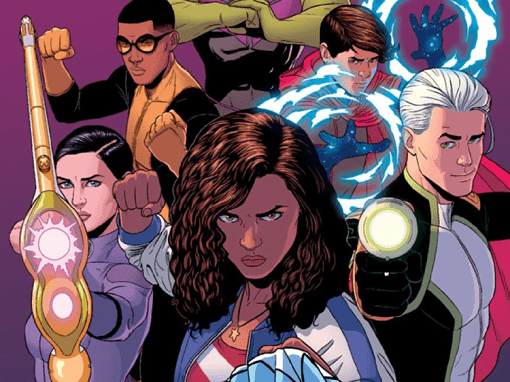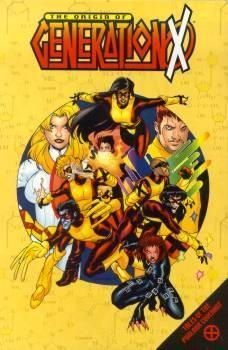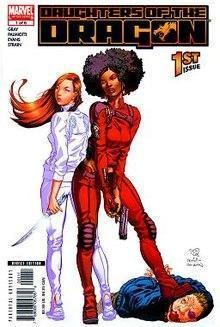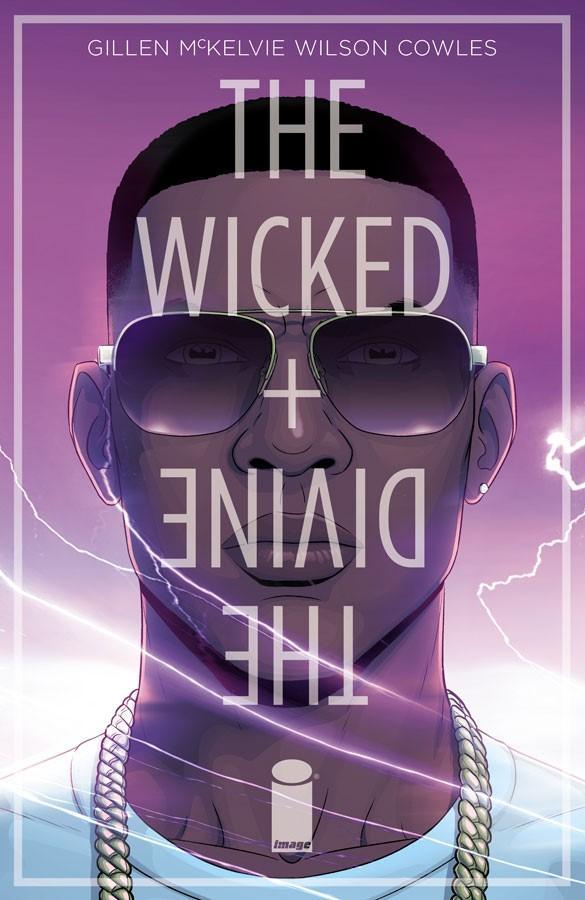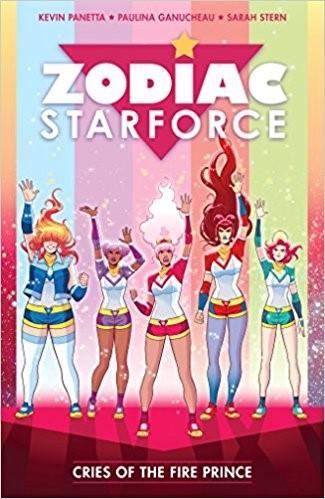There’s never been a stronger demand for diverse characters than now, and the comic book industry seems to be listening and responding in kind, giving readers the chance to see themselves and their personal experiences reflected in the pages of their favorite (or soon-to-be favorite) comic book. Just as there’s a generous range of subjects for students to learn about in school, there are also several diverse comic book narratives teachers can use to introduce their young scholars to the world they live in and the many different people who inhabit it. With that in mind, we’d like to offer a list of five comics with diverse casts and ways you can use their themes in your classroom.
Young Avengers
(intended for teens 13 and above)
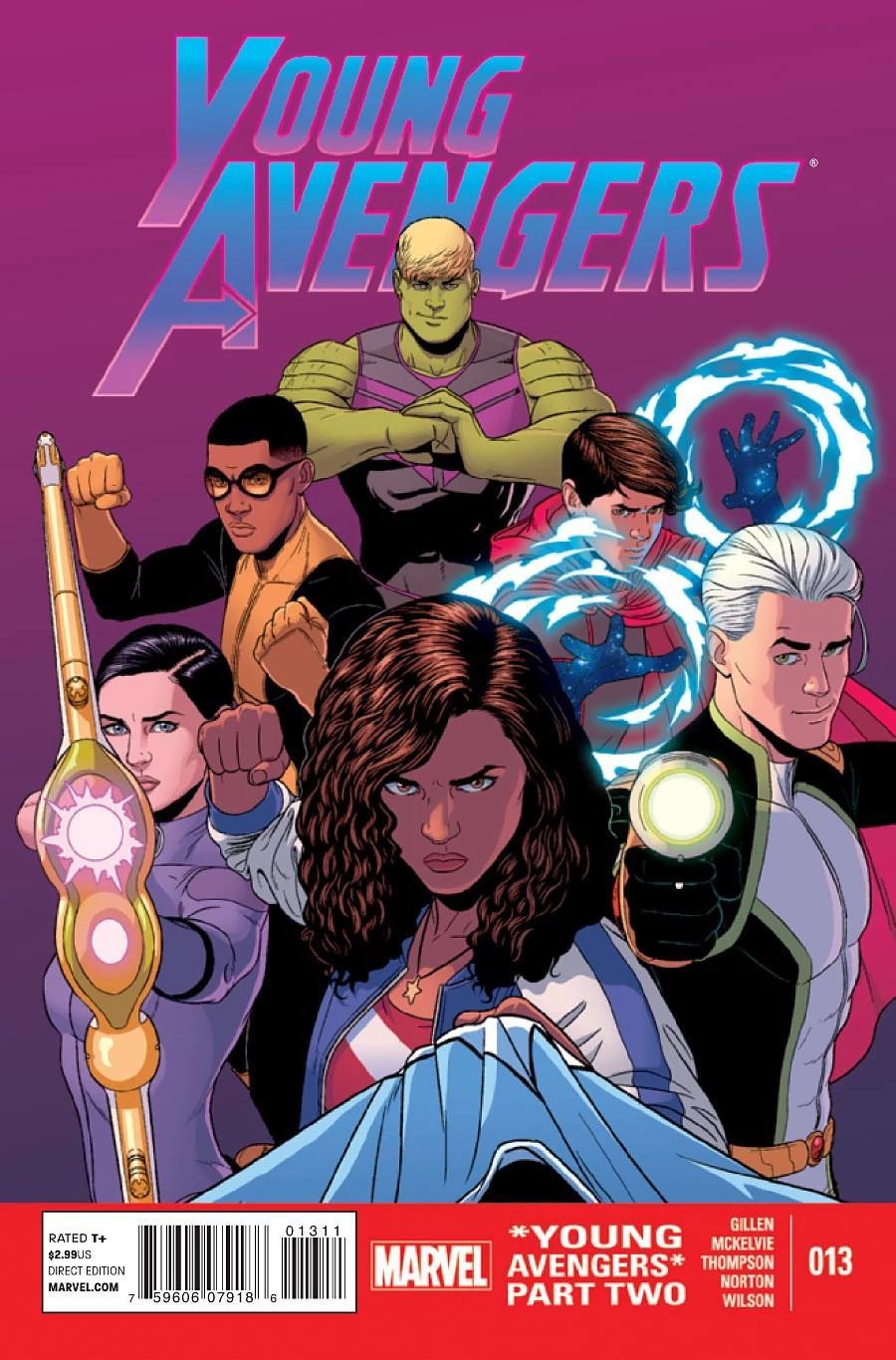
Young Avengers is a Marvel title, perfectly suited for younger audiences. As with any comic book team, the group has seen members come and go, but the Marvel NOW! relaunch team is the most diverse to date.
Ms. America Chavez, a Latina superheroine with two mothers, is touted as being one of the Marvel universe’s strongest beings, not to mention the fact that she can create dimensional portals with her powerful kicks. Prodigy is Black, a brilliant strategist, and openly bisexual. The team’s second powerhouse is a half-Skrull, half-Kree alien named Hulking, who’s engaged to magic-using teammate Wiccan. Finally, there’s Noh-Varr, a full-blooded Kree alien with superior strength, speed, and durability, thanks to an infusion of cockroach DNA. Who knew pests could make for the perfect blueprint for a superhero?
Because it’s important to have the opportunity to learn about role models from a variety of cultural, ethnic, and religious backgrounds, after introducing your students to these characters, have them describe the most noticeable traits of each character.
Then, based on those traits, you can have members of your class identity which member of the Young Avengers they might choose as a mentor and why. Even though these characters are fictional, they still have characteristics that can resonate with your class, and you can use these as a springboard for identifying similar attributes in well-known figures, such as Martin Luther King, Stephen Hawking, Ruth Bader Ginsburg, and the Dalai Lama. You can even extend this to some of the younger public figures paving the way for your students’ generation.
Generation X
(intended for teens 13 and above)
The original mid-90s Generation X team lineup was the most diverse of its rosters. Jubilation Lee, one of the most popular and well-recognized members of the Marvel universe, is a Chinese-American youth who has been a mutant, vampire, mentor/leader of the group’s most current incarnation, and adoptive mother. Everett Thomas, codenamed Synch, brings a type of diversity all his own, thanks to his ability to duplicate and master superpowers.
Paige Guthrie/Husk is a mutant who sheds her skin to reveal a variety of physical forms and properties, such as brick, glass, and diamond. Additionally, Paige is self-conscious about the fact that she was born and raised in Kentucky, as the daughter of a coal mining family, something that turns her into an overachiever. M is a Muslim mutant born into a family whose riches almost equal her strength and intellect, among many other abilities.
“Family” is a major theme in Generation X. As a way to engage your class’s imagination, have them prepare a presentation in which they pretend to visit the home of a member of Generation X, making sure they keep in mind the person’s cultural and ethnic background. This will require some study of the character’s culture, and some thought about how they would engage that culture in a respectful way, which can make for a more immersive experience and opportunities to learn and understand someone else’s culture, even if that someone is from the pages of a comic book.
Daughters of the Dragon
(appropriate for most readers, but parents are advised that they might want to read before or with younger children)
Anyone in your classroom who doesn’t care much for superheroes, no matter how much diversity there is to dive into, might prefer Marvel’s duo, Colleen Wing and Misty Knight, known as The Daughters of the Dragon. While the two only received a limited series and a few stories here and there, they’ve managed to make quite a name for themselves in the Marvel universe. Colleen is a Japanese martial artist descended from a line of samurai, and Misty is an African-American martial artist, who was also a one-time NYPD police officer who received a bionic prosthetic arm from Tony Stark after losing hers in a bomb attack.
The key to having a solid partnership is knowing and trusting whomever you’re working with. With that in mind, have your students prepare a list of holiday and religious practices, traditions, and celebrations unique to their family and culture that Colleen and Misty might share with each other when they aren’t being private investigators. Having your students share and explain these aspects of their own culture in front of the class provides an opportunity for the class to learn more each other’s culture in way that can foster appreciation, trust, and respect. You can also encourage students to bring images to accompany the list, to add a visual element to the exercise.
The Wicked & The Divine
(18 and up, may contain nudity, profanity, excessive violence, and other content not suitable for minors)
The Wicked & The Divine is one of the most creative comic book stories on this (and likely any other) list and has a host of characters to match that scope. The premise is that 12 gods are reincarnated as humans every 90 years. This time, the gods are essentially pop stars. Oh, and they’re also slated to die in just two years.
Characters include Laura, who was born into a mixed-race family and is the reincarnation of Persephone; Baal, a brown-skinned lightning god whose father was murdered by a mysterious being known as Ananke; and Lucifer, a woman who’s addicted to attention and a number of vices. The series is imbued with such themes as modern myths, obsession, and celebrity culture. Imagine a world in which old gods make heavy use of Twitter and hashtags and you’ve got The Wicked & The Divine.
As for how you can use the cast of The Wicked & The Divine in your classroom, have your class bring in books (both fiction and nonfiction) unique to their culture or ethnic background, that would help a reincarnated god get a better understanding of modern humans and our many different cultures. They should be prepared to give a brief description of the book, and how it represents an aspect of human culture that the reincarnated god needs to understand. You never know how much interest this could spark between your students, and the activity could end with them adding several titles to their reading lists.
Zodiac Starforce
(appropriate for most readers, but parents are advised that they might want to read before or with younger children)
If you have fans of Steven Universe in your classroom, then they might already be familiar with Zodiac Starforce. The miniseries easily falls under the “Magical Girl” genre, along with Sailor Moon and Cardcaptor Sakura. Starforce tells the story of five high school girls of different ethnicities and body types. Emma is the leader of the group, with a personality that’s a blend of
nerves and strength. Kim, one of the tallest members of the group, with a more generous frame than the rest, has a heart of gold and a love for Godzilla, horror movies, and wrestling. Molly is Asian and the physical powerhouse of the group, whereas Savannah acts as the matriarch who always checks in with the team emotionally. The group is rounded out by Lily, an afro-puffed lover of card games and the sci-fi classic, Dune.
The ladies of Zodiac Starforce transform to access their special abilities, outfits, and weapons. Ask students to pick a member of the team and redesign her outfit with items of clothing unique to their culture, adding accessories if they like. (If they’re struggling with identifying their “culture”, they can use a subculture, like “hip-hop” or “emo”.) If any article of clothing has a special meaning or a unique family story behind it, ask your students to be sure they mention that in their presentations. This is a good way for your class to not only learn more about fashion in their own culture but receive a lesson about fashion from other cultures and ethnic backgrounds as well.
We hope these comic book characters have sparked some inspiration and excitement for both you and your classroom about the topic of diversity. Be sure to let us know how your students respond to the prompts above.
Pop Culture Classroom has plenty of additional lesson ideas inspired by a wide variety of comic books and pop culture. Make sure you click the subscribe button at the top right of the page for more in the future. Happy teaching!


